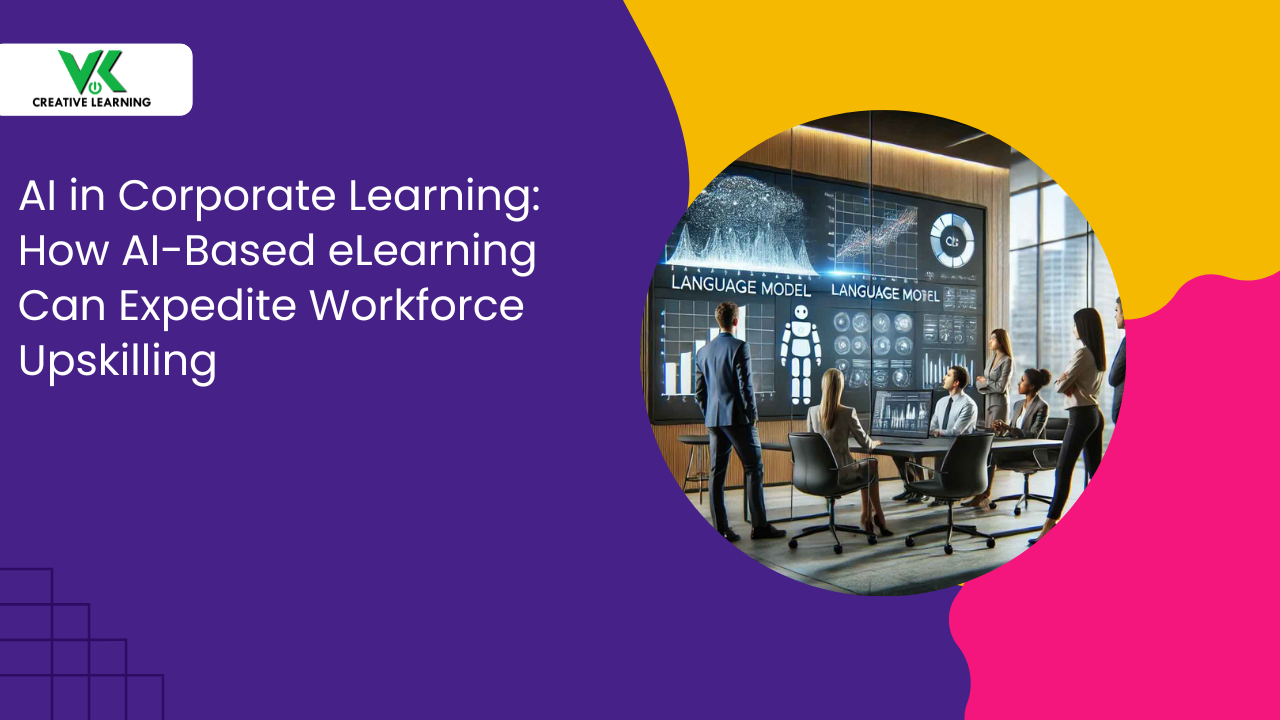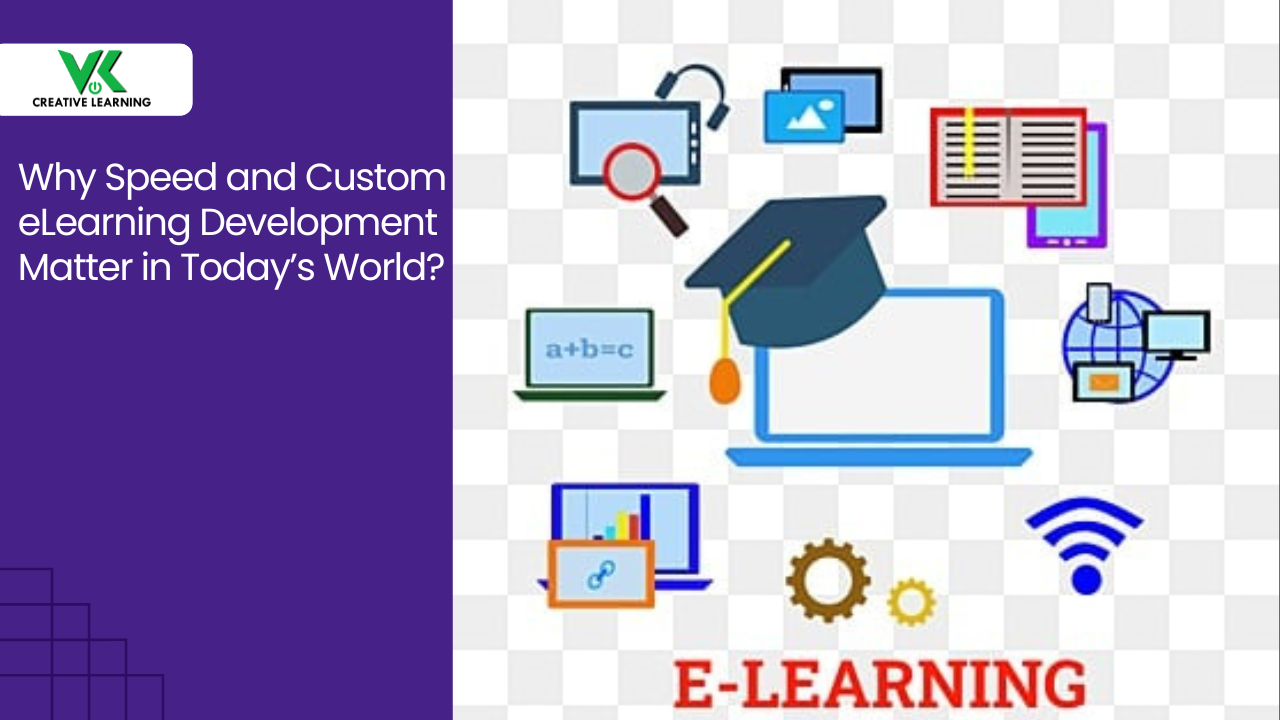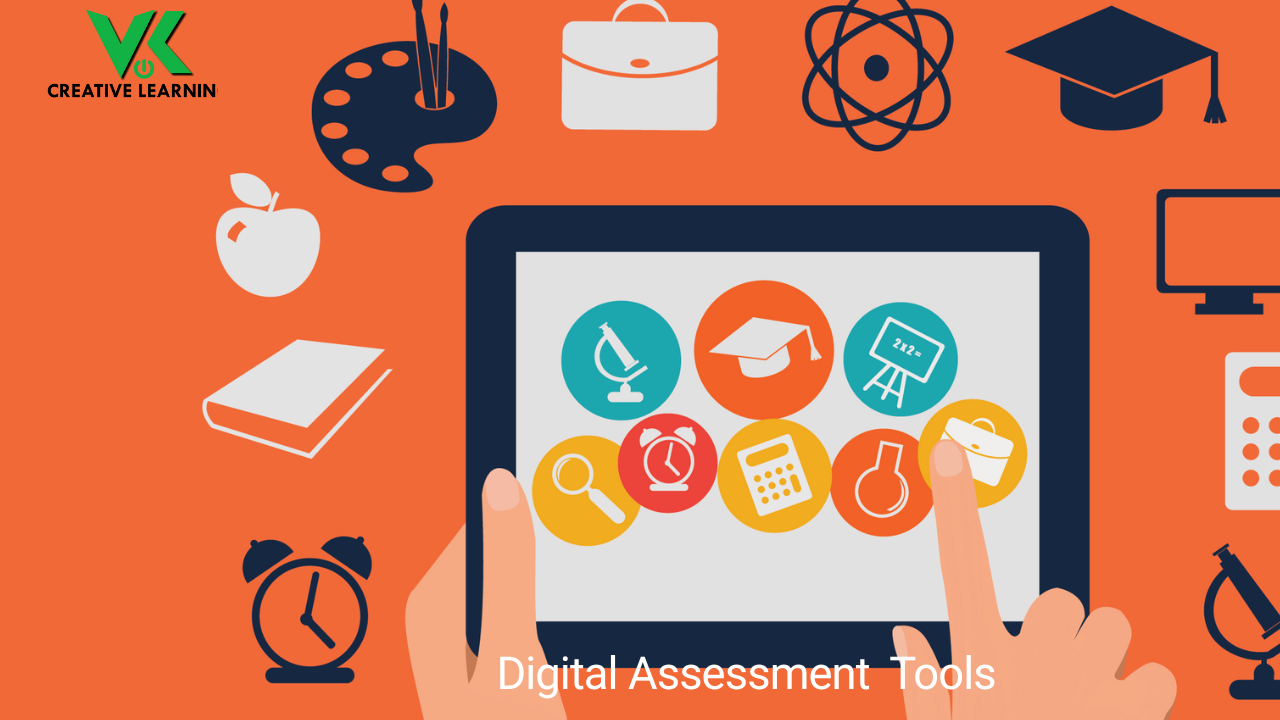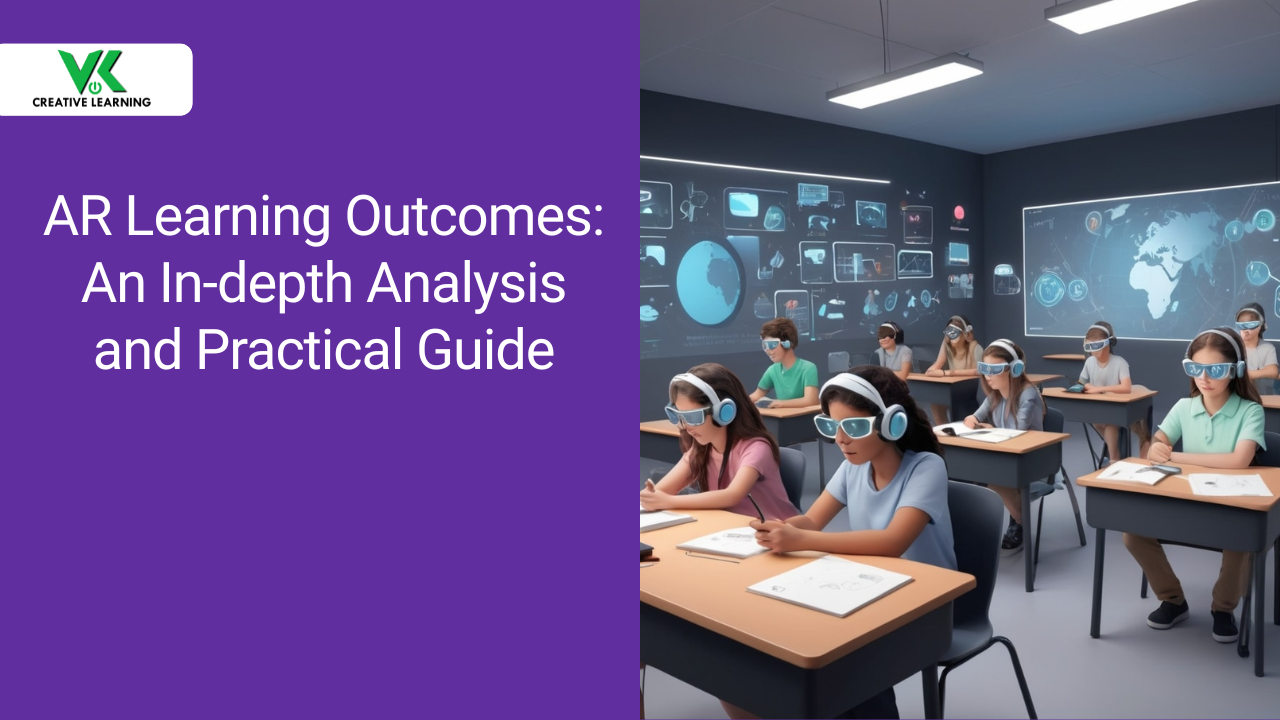AI Ethics in eLearning: Predictive Analytics for Stronger Learning
October 28, 2025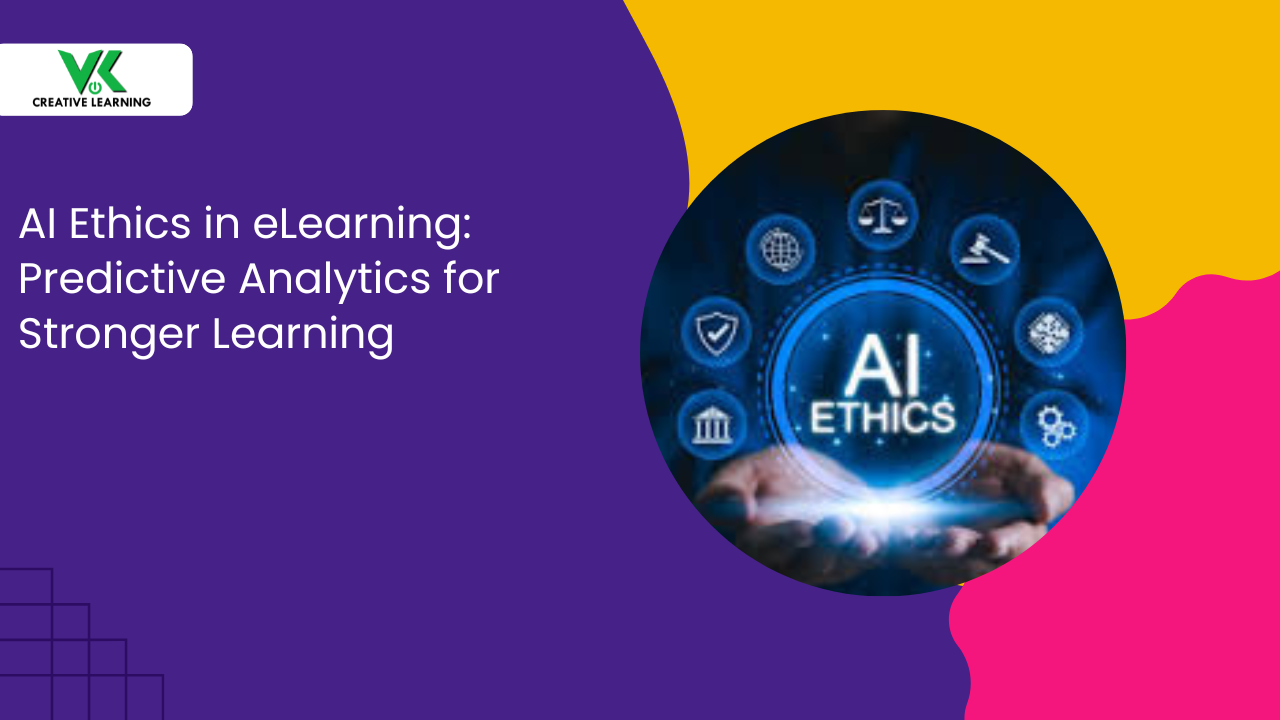
AI ethics that stand for the fair-use principle in eLearning have to be seen as more than rules. Elaborately, it revolves around fairness with equal treatment to all content. Along with it comes trust and safety as far as knowledge distribution is concerned.
For instance, suppose learners' test scores are declared, and it is judgment time. At that point in time, AI must not show favor for one learner over another.
Similarly, when it comes to daily tools (some support like voice assistants), they mustn't misinterpret language accents. But instead, there should be AI’s fairness influences in relation to real-life learning as well as digital engagement.
Table of Contents:
- Why AI Ethics in eLearning Is Crucial for Learners’ Knowledge Development
- More Examples Pertaining To AI Ethics, Cognitive Computing and Decision-making
- A Further Closer Inspection of Why Automated Decision Making Needs Ethical Grounding
- Human-sensitivity-nuanced fairness
- Accountability and Transparency
- Relating Cognitive Computing, Human-Like Reasoning, and AI Ethics in eLearning
- Natural Language Processing (NLP) And AI Ethics
- Supervised Learning Under Ethical Responsibility
- Unsupervised Learning in an AI Context
- Reinforcement Learning And Responsible Feedback Loops
- Daily-Life Parallels That Explain AI Ethics Clearly
- Predictive Analytics and Personalized Daily Learning
- Transparency Trust In AI-Guided Learning
- Impact on Teachers, Mentors, and Learning Professionals
- Data Privacy in Ethical AI
- Cultural Sensitivity and Inclusive AI Systems
- Balancing AI with Proper Judgment
- Institutional Responsibility Toward AI Ethics In K12 Education
- Conclusion
Why AI Ethics in eLearning Is Crucial for Learners’ Knowledge Development
Interestingly, not many may consider the aspect of AI Ethics. This means a responsibility-driven guide built on high-end algorithms that shape knowledge with fairness.
Without this feature onboard, learners may become victims of misjudged outcomes. As an example: predictive analytics that focuses on data patterns of the learners may suggest weak study material tuned as per flawed input.
This is a situation more akin to a teacher handing wrong notes to the entire class without rechecking in a hurry. The same holds for the automated decision-making algo.
More Examples Pertaining To AI Ethics, Cognitive Computing and Decision-making
Children have the tendency to blindly trust calculator results, and hence, they may trust AI outputs similarly. Thus, the digital algo in the form of cognitive computing and decision-making is bound to make mistakes.
Importantly, it is essential to note that machines may err without morally sound principles. For example, AI-based eLearning can use future-shaping logic that may misjudge a situation.
So, a diligent student is wrongly pigeonholed into a remedial track because of misleading past data--due to AI unsupervised learning. Likewise, there is a chance that a text-understanding tool may misread nuance.
Example: An AI grader mistakes a student’s creative-essay-sarcasm for a factual error. Thus, such learning capability of AI demands careful ethical guidance.
A Further Closer Inspection of Why Automated Decision Making Needs Ethical Grounding
Human-sensitivity-nuanced fairness: An eLearning platform for learners may deliver performance score verdicts. This is rule-based output (that is referred to as automated decision making) is prone to misjudgment in many scenarios. These AI-based judgments may lack human-sensitivity-nuanced fairness.
Accountability and Transparency: Imagine a trainee’s final skill-grading; in such cases, an incomplete data-log from a prior internship results in an unfairly low capability score. Or, a student is marked low; that is, systemic bias penalizes a student unnecessarily.
A student can suffer for using a non-standard, yet-correct, solving method. Fairness, therefore, is not optional; accountability and transparency must guide systems.
Relating Cognitive Computing, Human-Like Reasoning, and AI Ethics in eLearning
Cognitive computing that works as adaptive-learning pathways is designed to emulate human cognition. That is, it deciphers learners’ feelings; their unique cognitive styles. In spite of all these, peril looms and in large form: unprincipled systems create stereotypes.
Thus, an AI eLearning platform necessitates ethically-grounded training--a crucial safeguard. An AI sees that certain learners are reserved; it then assigns them simpler, less engaging tasks.
Or, it can be a case wherein an AI-based algo misreads speed for intellect alone. This way, a learner rushes, earning AI praise while another learner reflects, getting flagged as slow. Ethics must guide human-like reasoning (that is: empathy-driven-insights). These special designs ensure overall required fairness; a balanced approach.
Natural Language Processing (NLP) And AI Ethics
NLP (Conversational-Learning-Tools) decodes student language--what they are trying to convey. This AI-based learning capability helps learners talk; converse with the eLearning platform. But, there is a chance that ethical snags may emerge from misread communication.
Case: AI may, based on certain parameters, misjudge rich human expression.
Example: A student uses a local idiom in an essay; the AI bot incorrectly flags it as a grammatical mistake.
Supervised Learning Under Ethical Responsibility
Supervised learning teaches AI using labeled data in the form of examples. Also, it is used to power Predictive Analytics, helping to forecast learners' paths. But imagine biased in the form of historically-skewed training data. Result: The system’s Automated Decision Making perforce becomes prejudiced.
Predictions are unfairly skewed; a deep ethical quandary. It is like a referee checking one aspect in a game and ignoring others.
Thus, AI Ethics demands balanced and fully complete datasets. Thus, via a system like Reinforcement Learning [rewarding diverse types of learners' skills]. This would ensure that all student talents are truly valued and that fairness remains the paramount objective.
Unsupervised Learning in AI Context
Unsupervised Learning in customized eLearning discerns patterns without any labels--no cases or examples. In schooling, it groups students on a performance basis only.
A Cognitive Computing system might categorize learners unfairly and put them in a class where they have more weaknesses than others. This offers them only a narrowed-down curriculum scope, and so such progression resembles sorting of library-goers by shoes. Some patrons need a map; not a guide.
Moreover, such algorithms may demotivate perfectly capable pupils needing scant guidance. Hence, the implementation of proper AI Ethics ensures clusters are supportive.
Reinforcement Learning And Responsible Feedback Loops
AI reinforcement learning learns from its actions. That is, it operates and understands through an iterative process [that is: reward-based] trials. To understand this: think of teaching and guiding self-driving cars through algorithms--trails and error basis.
In classrooms, AI in eLearning can adapt modules adroitly as per learners' performances. Yet, AI ethics in eLearning prevents lopsided rewards. Imagine a child using K12 eLearning: praised for simpler problems without checking their competency in doing tough problems.
This way, harder math exercises may get ignored. And, unfortunately, such an imbalance fabricates false-feeling motivation among learners. With ethically sound AI design, it supports growth. Automated decision-making encourages well-rounded effort and authentic knowledge building.
Daily-Life Parallels That Explain AI Ethics Clearly
Interestingly, AI ethics mirrors life's fairness; suppose a referee judges a contest. Any judgment-impaired calls by the referee can obliterate trust.
Similarly, a flawed AI completely shakes the motivation of learners. In eLearning, AI Ethics acts parentally and ensures tasks are always balanced among learners. Its Predictive Analytics remains poised, and by this, student dropout risks go down.
Hence, Cognitive Computing in AI ensures resources are fair in all ways. Thus, such an AI system can be implemented in powering chatbot customer service training too.
Predictive Analytics and Personalized Daily Learning
Predictive analytics ape like a clever GPS and charts out new learning routes. When students flounder, it helps them with suggestions. The eLearning system that has been customized also recalculates a learning path when they need further assistance.
Yet, without ethics, AI predictive analytics may suffer and might misdirect weaker learners. Ultimately, learners could end up getting lengthy-looping review sheets.
Also, there is a chance that stronger students might get creativity-boosting project ideas. Hence, the introduction of proper AI ethics will ensure truly impartial guidance for all learner types. In fact, the eLearning modules incorporated with proper AI ethics can provide student-centric success pathways.
Transparency Trust In AI-Guided Learning
Transparency, without any doubt, works as a bedrock of trust when it comes to AI. Hence, be it students or trainees, they should grasp AI’s working logic. This way, they will get a know-how of how it judges a situation.
Without openness in the functioning of AI eLearning courses, trust erodes fast. Imagine a bank; it snatches cash, and there is no explanation forthcoming, ever. This black-box-approach builds only resentment. In schools, and thus, AI must be an open book. This clear-as-day system is essential for Predictive Analytics in AI-based eLearning.
Impact on Teachers, Mentors, and Learning Professionals
Educators use smart AI aides; for example: grading-automating software and attendance-tracking systems. Ethical AI must remain an assistant, shouldn't be a replacement.
Imagine a teacher wrongly blamed. Reason: an error-prone AI algorithmic system reports bad marks. Also what if AI suggested entirely inapt skills? This could create deep mistrust among learners. AI in eLearning, thus, must stay as a helpful partner: not a dictator.
Data Privacy in Ethical AI
Ethics also means guarding student data. Students share highly confidential personal details. This includes student-performance records, for sure. It also includes learning-habit information. Without good rules in place, data can be misused.
For instance, selling learners’ data is unethical. Limiting career paths can also be harmful. Ethical AI keeps information safe and sound and ensures that data is used only for growth.
Cultural Sensitivity and Inclusive AI Systems
AI ethics must include cultural respect as learners come from culturally-diverse, unique backgrounds. Without good AI design, instructions may favor one culture.
Example: some essay-checking applications may commit this error; so can some skill-analyzing programs. They may ignore local job needs, while ethical AI prizes this rich diversity with rich information.
Balancing AI with Proper Judgment
AI cannot replace human wisdom. Ethics reminds us: AI should support and mustn't dominate our decisions. For example, student-success forecasting might err. A tool like course-difficulty predictions may be wrong, and a teacher can override any bad advice.
Institutional Responsibility Toward AI Ethics In K12 Education
Schools bear a morally very heavy ethical weight. They must watch for AI's preferred choices, guarding against truly one-sided digital bias. This oversight is vital for tools: Performance-Gauging-Software. Without checks, these tools can fail badly. Trust erodes quickly when systems are unjust.
Here is an example to consider: imagine a robot teacher grading essays. It only likes one single way of writing. Your unique story gets a very bad grade. The robot is unfair, not your story.
Workplaces face this same tricky problem. Think of a hiring-bot for jobs. It discards resumes with unfamiliar-sounding work specialties or forte.
Good people never get a single chance, which is a blatantly prejudiced system.
Thus, institutions and firms must hold a clear, deeply felt moral role. They must test all learning systems-then review them. This hard work with future-glimpsing analysis is key. It keeps learning fair, safe, and sound.
Conclusion
AI Ethics builds trust, fairness, and transparency for learning. Predictive analytics works as a sure-fire winning combination with supervised learning and unsupervised models.
Hence, all these factors strengthen learners' knowledge bases. These models work for students of all abilities.
Institutions and companies around the world should look up VK Creative Learning (VKCL) for building a customized eLearning solution incorporating AI ethics.
VKCL’s user-centric design in AI eLearning focuses on the user's needs. For example, a user-centric design for a learning app would make it easy for a student to navigate various lessons.
VKCL’s human-centered AI puts human values at the center of AI's use. Example: a company might use human-centered eLearning AI to build an app. This would enhance employees’ productivity and mental well-being.
